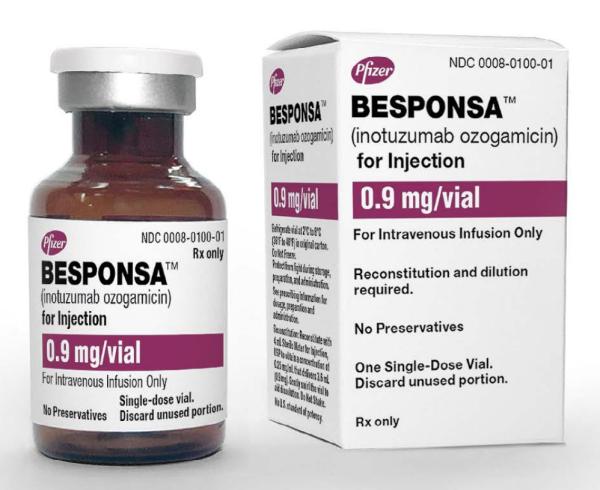Besponsa Disease Interactions
There are 3 disease interactions with Besponsa (inotuzumab ozogamicin).
Inotuzumab ozogamicin (applies to Besponsa) liver dysfunction
Major Potential Hazard, Moderate plausibility. Applicable conditions: Liver Disease, Hyperbilirubinemia
Hepatotoxicity, including severe, life-threatening, and sometimes fatal hepatic veno-occlusive disease (VOD) may occur during or following treatment with inotuzumab ozogamicin. The risk of VOD is greater in patients who underwent hematopoietic stem cell transplant (HSCT) after inotuzumab ozogamicin treatment, total bilirubin level greater than or equal to the ULN before HSCT, ongoing or prior liver disease, prior HSCT, increased age, later salvage lines, and a greater number of treatment cycles. Patients who have experienced prior VOD or have serious ongoing hepatic liver disease (e.g., cirrhosis, nodular regenerative hyperplasia, active hepatitis) are at an increased risk for worsening of liver disease, including developing VOD, following treatment with inotuzumab ozogamicin. Monitor closely for signs and symptoms of VOD; these may include elevations in total bilirubin, hepatomegaly (which may be painful), rapid weight gain, and ascites. It is recommended to monitor liver tests in all patients, including ALT, AST, total bilirubin, and alkaline phosphatase, before and following each dose of inotuzumab ozogamicin. Elevations of liver tests may require dosing interruption, dose reduction, or permanent discontinuation of treatment.
Inotuzumab ozogamicin (applies to Besponsa) QT prolongation
Moderate Potential Hazard, Moderate plausibility. Applicable conditions: Electrolyte Abnormalities, Arrhythmias
The use of inotuzumab ozogamicin may cause increases in QT interval. It is recommended to administer inotuzumab ozogamicin with caution in patients with a history or predisposition for QTc prolongation, those taking medications that are known to prolong QT interval, and in patients with electrolyte disturbances. Obtain electrocardiograms and electrolytes values at baseline, after initiation of treatment, after initiation of drugs known to prolong QTc, and periodically thereafter as clinically indicated.
Inotuzumab ozogamicin (applies to Besponsa) renal dysfunction
Moderate Potential Hazard, Moderate plausibility.
The clearance of inotuzumab ozogamicin in patients with mild, moderate, or severe renal impairment was similar to patients with normal renal function. Care should be exercised when administering this agent in patients with end stage renal disease with or without hemodialysis as the safety and efficacy of inotuzumab ozogamicin is unknown in this patient population.
Switch to professional interaction data
Besponsa drug interactions
There are 434 drug interactions with Besponsa (inotuzumab ozogamicin).
More about Besponsa (inotuzumab ozogamicin)
- Besponsa consumer information
- Check interactions
- Compare alternatives
- Pricing & coupons
- Drug images
- Side effects
- Dosage information
- During pregnancy
- FDA approval history
- Drug class: miscellaneous antineoplastics
- Breastfeeding
- En español
Related treatment guides
Drug Interaction Classification
| Highly clinically significant. Avoid combinations; the risk of the interaction outweighs the benefit. | |
| Moderately clinically significant. Usually avoid combinations; use it only under special circumstances. | |
| Minimally clinically significant. Minimize risk; assess risk and consider an alternative drug, take steps to circumvent the interaction risk and/or institute a monitoring plan. | |
| No interaction information available. |
Further information
Always consult your healthcare provider to ensure the information displayed on this page applies to your personal circumstances.


